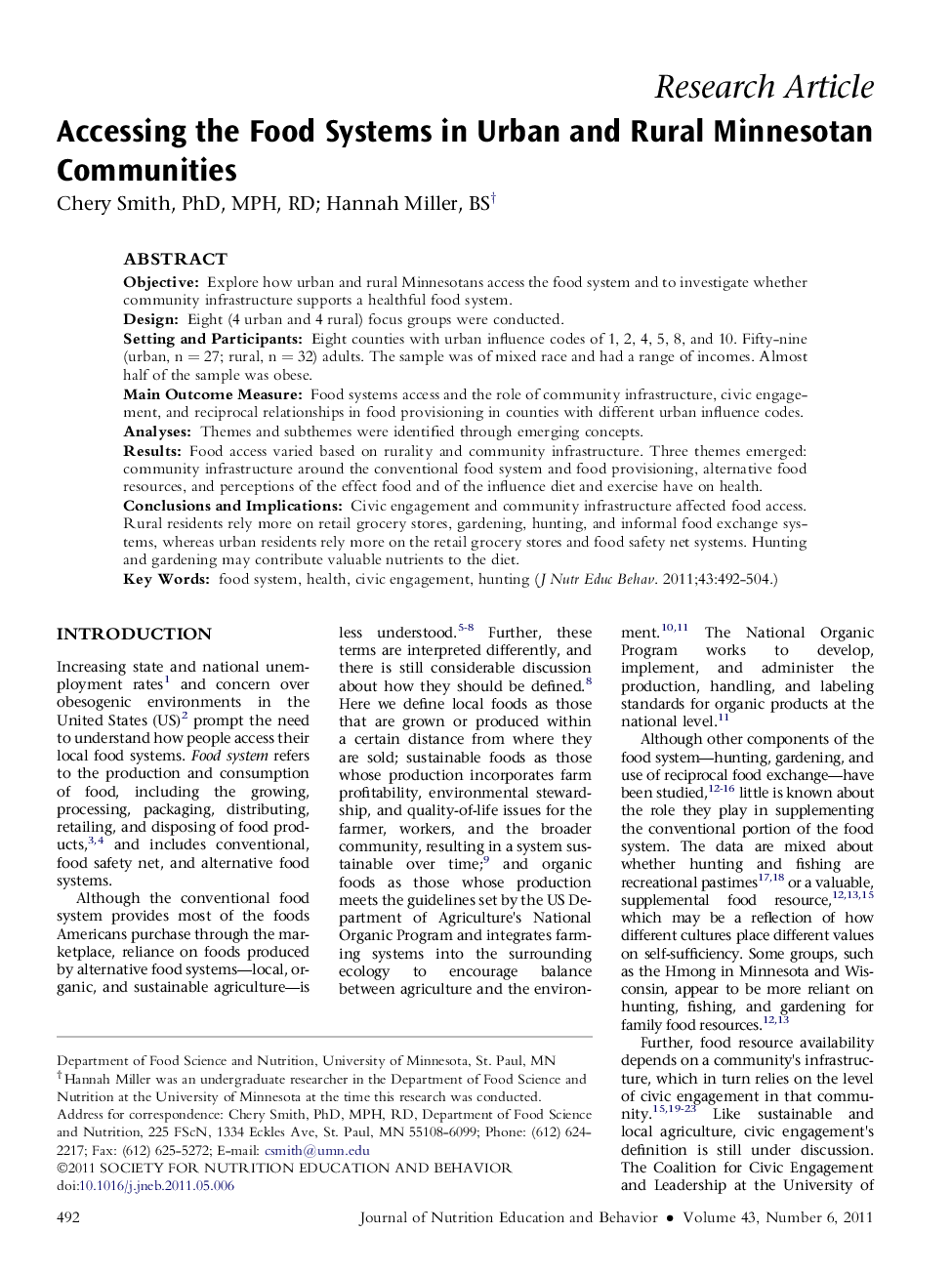| Article ID | Journal | Published Year | Pages | File Type |
|---|---|---|---|---|
| 361768 | Journal of Nutrition Education and Behavior | 2011 | 13 Pages |
ObjectiveExplore how urban and rural Minnesotans access the food system and to investigate whether community infrastructure supports a healthful food system.DesignEight (4 urban and 4 rural) focus groups were conducted.Setting and ParticipantsEight counties with urban influence codes of 1, 2, 4, 5, 8, and 10. Fifty-nine (urban, n = 27; rural, n = 32) adults. The sample was of mixed race and had a range of incomes. Almost half of the sample was obese.Main Outcome MeasureFood systems access and the role of community infrastructure, civic engagement, and reciprocal relationships in food provisioning in counties with different urban influence codes.AnalysesThemes and subthemes were identified through emerging concepts.ResultsFood access varied based on rurality and community infrastructure. Three themes emerged: community infrastructure around the conventional food system and food provisioning, alternative food resources, and perceptions of the effect food and of the influence diet and exercise have on health.Conclusions and ImplicationsCivic engagement and community infrastructure affected food access. Rural residents rely more on retail grocery stores, gardening, hunting, and informal food exchange systems, whereas urban residents rely more on the retail grocery stores and food safety net systems. Hunting and gardening may contribute valuable nutrients to the diet.
